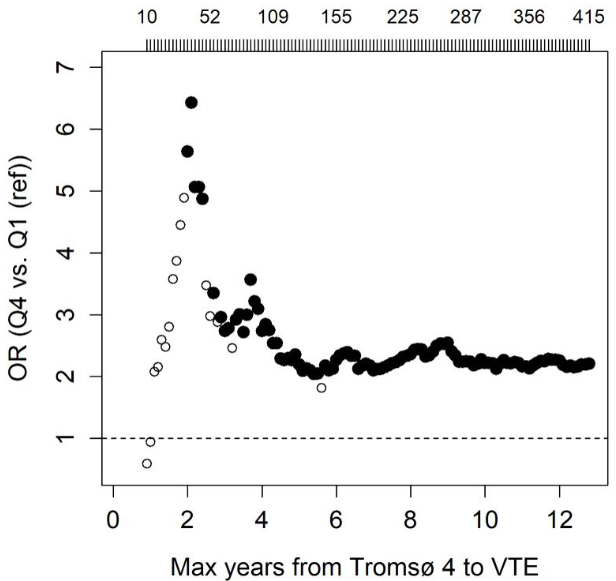Growth differentiation factor 15 (GDF-15), a marker of inflammation and oxidative stress, has emerged as a biomarker for arterial cardiovascular disease. However, the association between GDF-15 and venous thromboembolism (VTE) remains uncertain.
Scientists from The Arctic University of Norway therefore investigated the association between plasma GDF-15 levels and future risk of incident VTE, and explored the potential of a causal association using Mendelian randomization (MR).
They conducted a population-based nested case-control study comprising 416 VTE patients and 848 age- and sex-matched controls derived from the Tromsø Study. Logistic regression was used to calculate odds ratios (ORs) for VTE across GDF-15 quartiles. For the MR, they used data from the International Network on Venous Thrombosis (INVENT) consortium to examine whether single nucleotide polymorphisms (SNPs) associated with GDF-15 levels with genome-wide significance were related to VTE.

They found that the ORs for VTE increased across GDF-15 quartiles (P for trend=0.002). Subjects with GDF-15 values in the highest quartile (≥358 pg/mL) had an OR for VTE of 2.05 (95% confidence intervals 1.37-3.08) compared with those with GDF-15 in the lowest quartile (<200 pg/mL) in the age- and sex-adjusted model. ORs remained essentially the same after further adjustment for body mass index, smoking, hormone therapy, physical activity and C-reactive protein. Similar results were obtained for provoked/unprovoked events, deep vein thrombosis and pulmonary embolism. GDF-15 levels, as predicted by the SNPs, were not associated with VTE in MR.
Their results indicate that high GDF-15 levels are associated with increased risk of VTE, but MR suggests that this association is not causal. Recently this research has been published on Blood.
Sherry
